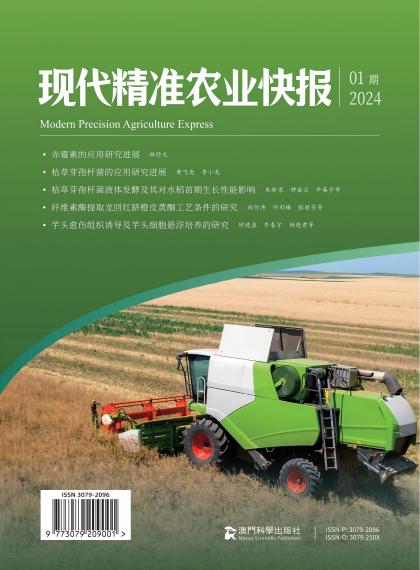摘 要:
目的:本研究利用纤维素酶提取龙回红脐橙皮中的黄酮,探究适宜黄酮提取的最佳工艺条件。方法:采用单因素实验与正交实验相结合的方法,考察酶使用量、乙醇浓度、料液比、提取温度、提取时间对脐橙皮黄酮得率的影响,探索最佳提取工艺。结果:本研究得出纤维素酶提取龙回红脐橙皮黄酮的最佳工艺为:酶使用量0.08g、乙醇浓度70%、料液比1:25、提取温度50℃、提取时间120min,脐橙皮黄酮得率为1.52%,平均回收率101.33%。结论:该工艺对脐橙皮黄酮的提取具有良好的效果,且简单、高效、稳定,可进一步为脐橙皮资源的开发利用与黄酮提取提供一定的理论参考。
关键词:脐橙皮;黄酮;提取工艺;纤维素酶
Abstract:
Objective: This study aimed to optimize the extraction process of flavonoids from Longhui red navel orange peel using cellulase. Methods: Single-factor experiments combined with orthogonal experiments were conducted to investigate the effects of cellulase dosage, ethanol concentration, solid-to-liquid ratio, extraction temperature, and extraction time on the flavonoid yield. Results: The optimal extraction conditions were determined as follows: cellulase dosage of 0.08 g, ethanol concentration of 70%, solid-to-liquid ratio of 1:25 (g/mL), extraction temperature of 50°C, and extraction time of 120 min. Under these conditions, the flavonoid yield reached 1.52% with an average recovery rate of 101.33%. Conclusion: This optimized process is simple, efficient, stable, and effective for flavonoid extraction from navel orange peel, providing theoretical insights for the resource utilization of citrus peel and flavonoid extraction.
Keywords: Navel orange peel; Flavonoids; Extraction process; Cellulase
--
